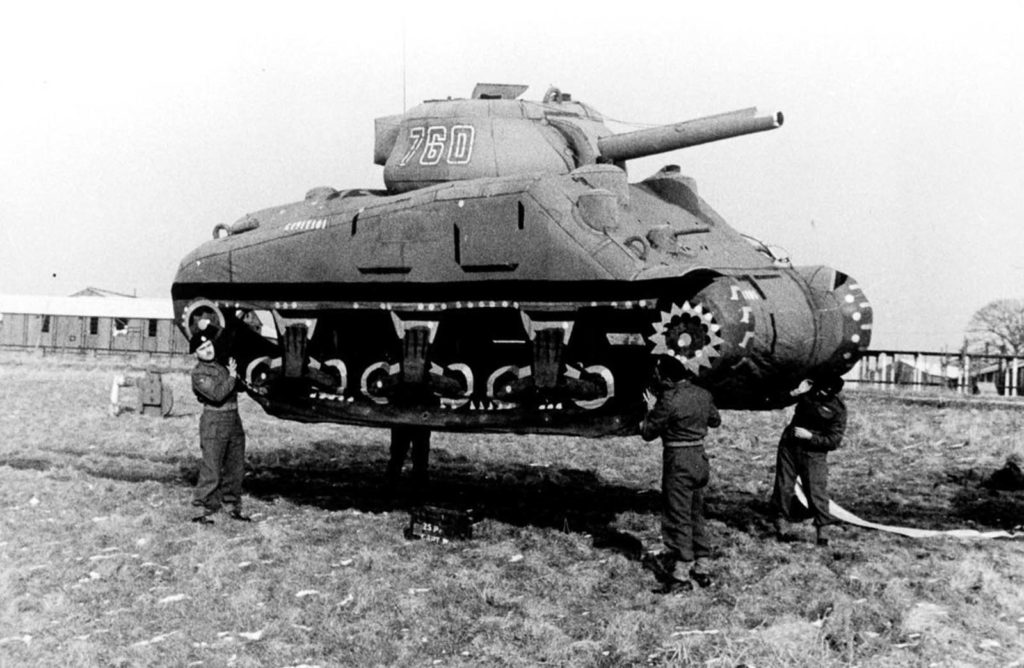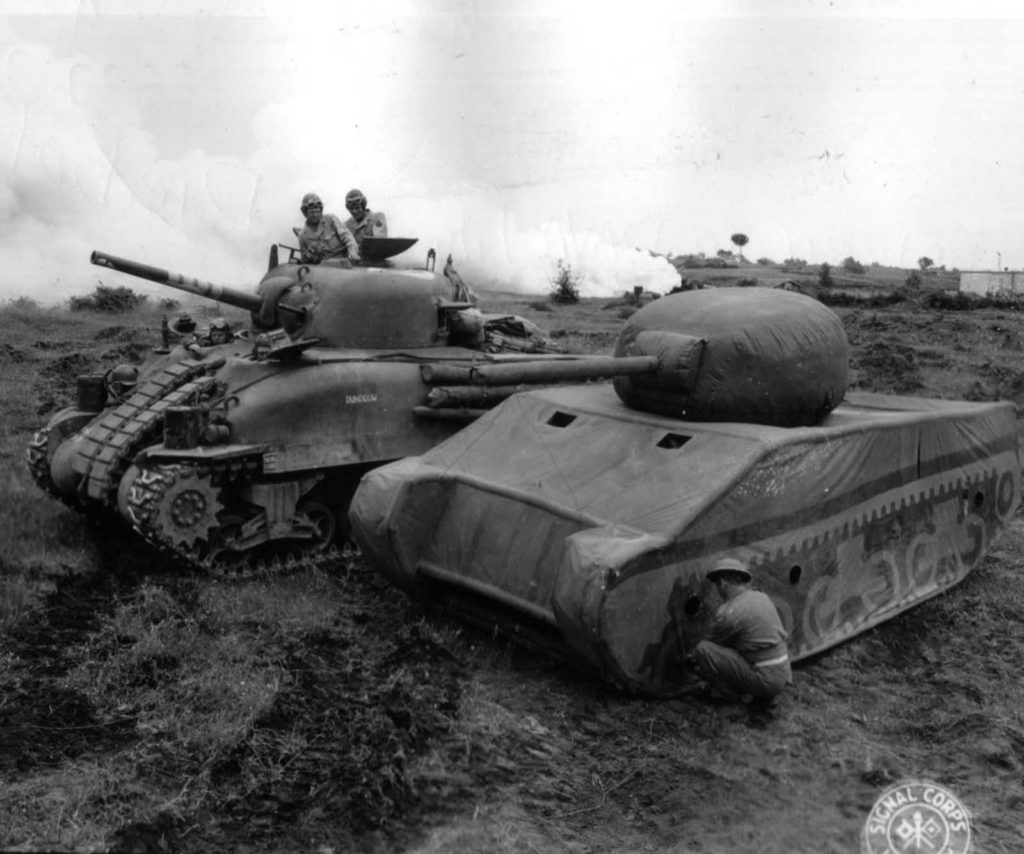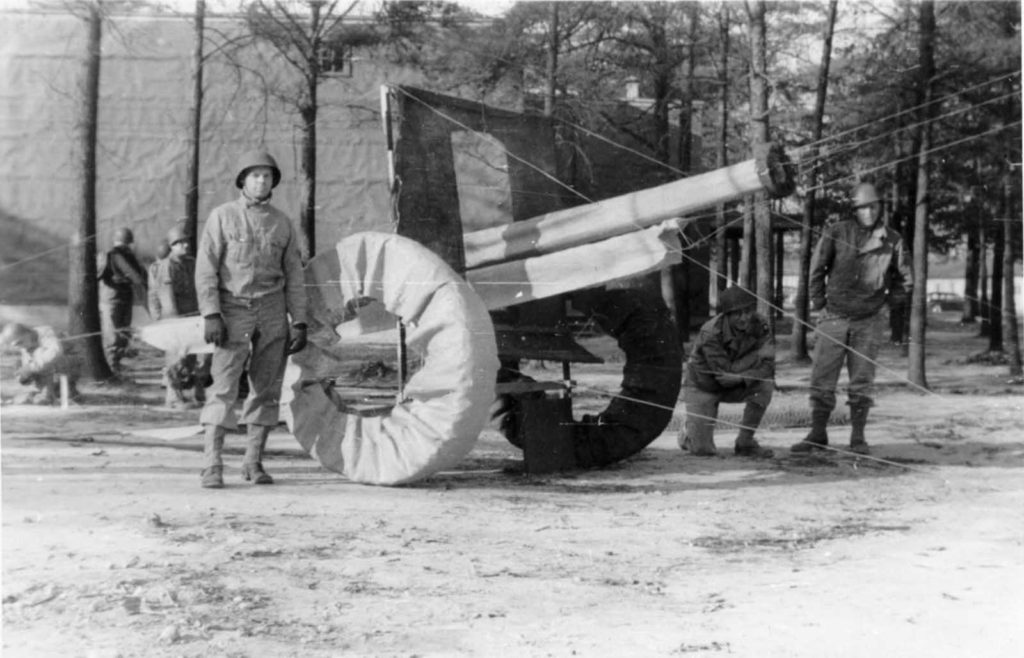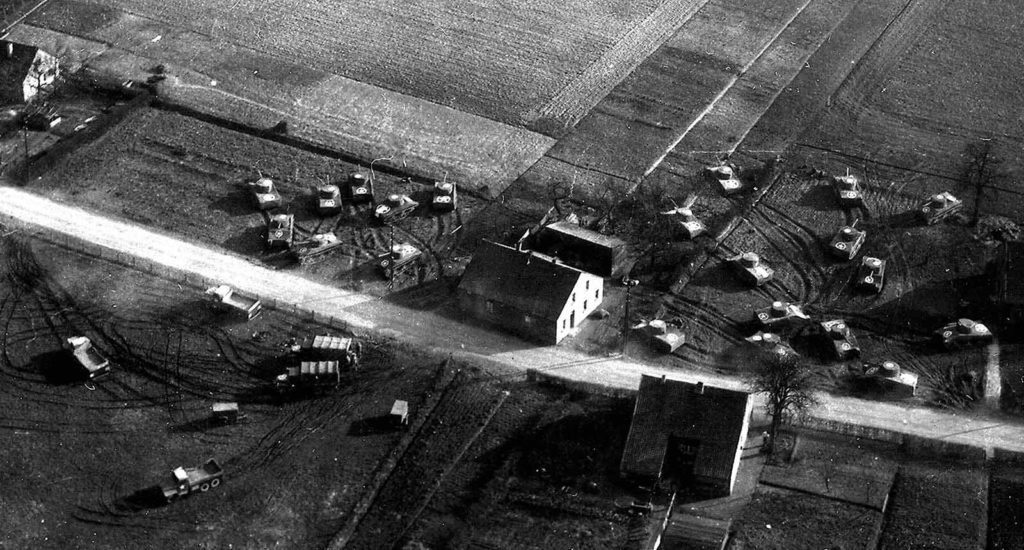World War II was a historic global conflict that left many parts of the world bloody and broken. It was a devastating war that took the lives of millions of people, but it was also a war full of deceit and deception. Nazi Germany was a powerful foe who had a tight grip on Europe, and the war showed no signs of slowing down.
The Allies were desperate to find a way to turn the tide of the war, as some 75 million people had died in the fighting.
During the war, 20 million military personnel and 40 million civilians perished due to deliberate genocide, massacres, bombings, disease, and hunger.
To turn the tide, the Allies met and determined that they would need to handle the war with more than just military might.
They would need to deceive the enemy to win, and they had to do it without Germany gaining any suspicion.
So, officials launched a type of disinformation campaign to throw the Germans off the scent and named the plan “Operation Bodyguard.”
The Allies were trying to determine what they would need to do to accomplish the D-Day landings, but they were also trying to keep the site of those landings a secret.
To do so, the Allies used several deception tactics to confound and mislead the Axis powers. These efforts of this operation laid the groundwork for the eventual Normandy invasion.

Why Did The Allies Decide to Invade Normandy?
Before the successful launch of “Project Overlord,” it was debated about where the Allies would launch another assault on Nazi Germany.
After much discussion, the Allies decided that Normandy would be the best site for an invasion. However, the Allies had to ensure that the Axis powers did not find out about their plans.
On the sloping beaches of Normandy, the Allies would have the elements of surprise, mainly because Hitler expected the attack elsewhere.
Hitler expected the attack to come in the Pas de Calais region, north of the river Seine, where the English channel is the narrowest.
There, Hitler had staged a large portion of his forces, assuming that the Allies would try to land here to open a second front due to tips he received from Allied undercover agents posing as German sympathizers.
The Normandy coastline had several disadvantages that the Allies had to account for, the first being that the Atlantic Wall was heavily fortified.
The Atlantic Wall was 2,400 miles of defensive obstacles placed along the coastline of Nazi-occupied Europe. This massive wall was erected to defend against any potential Allied invasions.
It comprised millions of mines, concrete bunkers, and pillboxes containing heavy artillery, tank ditches, and other beach obstacles.

At the same time, German soldiers would be dug in randomly in the cliffs overlooking the beach, proving to be the fiercest disadvantage for the Americans that stormed Omaha beach.
In addition, the English Channel frequently had rough seas and unpredictable weather. The English Channel proved to be just as dangerous as ever when it flooded the channel with fog. As a result, Eisenhower had to stay on the attack for 24 hours while the conditions improved.
Ultimately, securing a position in Normandy would solidify the Allies’ place in the war and help them establish a foothold, strengthening their presence in German-controlled Europe.
Moreover, establishing there would help relieve pressure on the Soviet Union as well and hopefully free France from German control while weakening the Nazi regime at the same time.
The Allies Defated Germany Using a Series of Coordinated Efforts
While many historians could speculate on why Germany lost World War II, it’s clear that constant bombardment weakened Germany overtime on several different fronts. Germany suffered in several areas, but mainly:
- Its War Economy
- Weak Supply Lines
- A War on Two Fronts
- The Lack of Strong Leadership
The Allies observed these weaknesses and used them to their advantage.
The United States, Britain, and the Soviet Union each played a significant role in defeating Nazi Germany. The German war machine was weak after the Blitzkrieg style of warfare was used on the Soviet Union.
Once they concluded this attack, their forces marched into Russia without being prepared. They had fragile and overextended supply lines, so their progress in Russia was slow and painful, though they covered the area quickly.
Marching into Russia depleted supplies to the front-line efforts, and despite Germany’s advanced position in Russia, the Soviet Union responded quickly.
Calling upon their immense human resources, the Soviet Union promptly pushed the Germans back, which began to take its toll on German morale.
Approximately 75% of Germany’s GDP went toward the war effort, but it wasn’t enough, and the Allies were putting in considerably less.
Unfortunately, routinely thin supplies led to Germany being desperate and short on essential supplies like food, medicine, and fuel. Though their economy began to recover and peak in 1944, it was far too late as Germany had long been fighting the war on two fronts.
The Allies And Their Coordinated Bombing Efforts
The Allies also used several bombing campaigns against Germany to weaken their war effort. First, the United States and Britain began precision attacks in 1943 that targeted specific military and industrial targets.
The goal was to cripple the German war machine by taking out key components essential to their operation. Then, for the next three years, from 1942 to 1945 or so, the Allies proceeded to bomb industrial plants, shipyards, and cities associated with critical war production.
While costly in terms of innocent lives lost, these attacks were very effective. The Allies dropped 2.7 million tons of bombs on Germany during the war, which damaged or destroyed over 60 cities.
This campaign was so successful that it’s often cited as one of the main reasons Germany lost the battle. In addition, the Allies began to bomb Germany’s oil fields and refineries to starve them of resources.

However, these tactics were part of the larger strategy to defeat Germany.
The United States, Britain, and the Soviet Union coordinated their efforts to bomb specific targets associated with the Nazi war machine; they even attacked road and railroad networks to isolate the invasion area further.
Fortunately, these precision attacks were very influential in crippling Germany’s ability to wage war. However, it wasn’t enough; the Allies realized they needed to do more.
The Beginnings of The “Ghost Army”
The Allies had to devise a plan to deceive the Germans into thinking they would land at Pas de Calais when they would land at Normandy.
The Calais invasion was a decoy operation conducted by the British and Americans to make the Germans think that the Allies would invade Calais instead of Normandy.
Part of the plan would be so practical that the Pas de Calais region is the logical place for an invasion if one were to come from Britain.
The Allies had a few Ghost Army units, and the 23rd Headquarters Special Troops was responsible for handling the deceptions.
The unit was put together by London-based U.S. Army officers Col. Billy Harris and Maj. Ralph Ingersoll; many wondered if the officers made up their tactics on the spot, but they were also employed in other theatres of the war, such as North Africa.
The “ghost soldiers” were to conduct various operations to make it seem like an invasion was imminent.
The unit consisted of approximately 1,100 soldiers, many of whom were artists. Their job was to create inflatable tanks and use multimedia devices, recordings, and speakers to imitate the sounds of an army.
The soldiers would use these devices to create the illusion of a much larger force, topping 40,000 or so men if need be. The “Ghost Army” was put together as a deception unit, a non-combatant role, though it often proved dangerous.
The “Ghost Army” In Action
The “Ghost Army” was implemented in early 1944 to deceive the Germans about the impending Allied invasion. The Germans were aware that the Allies would eventually try a cross-Channel invasion, but they weren’t sure where it would happen.
Once the Allies decided where it would happen, they employed the skills of the “Ghost Army” to begin the deception plan Operation “Fortitude,” which was part of the main operation otherwise known as Operation “Bodyguard.”
Operation Fortitude was split into two parts: Operation North, responsible for deceiving the Germans into thinking that the Allies would land at Norway, and Operation South, which made the Germans believe that the Allies would land at Pas de Calais, France.
The “Ghost Army” was a crucial player in these tactics and employed ingenious methods to make their deceptions more believable.
The creation of entire “ghost armies” comprising inflatable tanks, mock radio transmissions, and sound trucks playing recordings of battle noises.

The unique unit used these fake forces to convince the Germans that the Allies had more troops and materials than they did, leading them to make poor decisions that ultimately cost them the war.
The effort was simple and was constructed into four working parts by the unit’s leaders. The four main parts of the “Ghost Army” included:
- The army had over 2,000 individual inflatable rubber and canvas tanks and other vehicles. Soldiers could quickly move in and set up these devices in a hurry, making them look like a full-fledged armored division. However, from a distance, it was difficult to distinguish these fake vehicles from the real thing.
- A sound company specialized in creating sound effects that could create fake radio transmissions. The sound engineers in this group were so effective at their duties that they could mimic “morse code” operators and make their communications sound authentic.
- The “Ghost Army” also employed sound deception, which was usually composed of military training exercises, trench preparation, and bridge construction played on massive speakers into the environment. The idea was to signify to the Nazis that Allied military forces occupied potentially unprotected areas.
- The deceptive nature of the unit also included combat engineers who created fake uniforms with military insignia to confuse the Nazis and mislead their spies, which could be in any Allied country.
The “Ghost Army” was put together relatively quickly and used its resources to significantly affect the war effort. The purpose of this deception was to make the Germans think that the Allies were attacking from multiple directions when, in reality, they were only attacking from one unified approach.
This deception convinced the Germans to pull their troops away from other areas, ultimately leading to the Allied victory on D-Day.
One of the most successful missions performed by the “Ghost Army” was Operation “Viersen,” which happened on March 18 to March 24, 1945.
The Ghost Army employed 600 inflatable vehicles, bogus uniform patches, and recordings of pontoon bridge-building to fool the Germans into thinking that the 30th Infantry Division and 79th Infantry Division were getting ready to cross the Rhine River.
The scheme worked. The Germans relocated many of their defenses to where they believed the two divisions were positioned and bombarded an army that wasn’t there.
The “Ghost Army” continued to deceive the Germans throughout the last year of World War II and is credited with performing over 20 deceptive campaigns against the enemy. The “Ghost Army” utilized their artistic and technological expertise to create these elaborate illusions.
The army is even known for saving approximately 30,000 soldiers, possibly more. For example, Operation Viersen specifically fooled the Germans into thinking that a force of nearly 40,000 men were crossing the Rhine River that day.
The “Ghost Army” is Honored Nearly Eight Decades After its Inception
If you asked the soldiers in the four units that made up the “Ghost Army” what they thought of their job, they might not think much about it.
Yet the reality is that these men, who were artists and engineers, used their deception talents to save countless Allied soldiers’ lives.
As a result, President Biden signed a bill to grant these soldiers the Congressional Gold Medal in light of their service to the United States.
The “Ghost Army” is a perfect example of how soldiers can use art and deception in war. These men used their creativity and ingenuity to save the lives of their comrades and ultimately help the Allies win the war.
While they aren’t the first to use deception tactics in combat, they are certainly one of the most famous examples.

